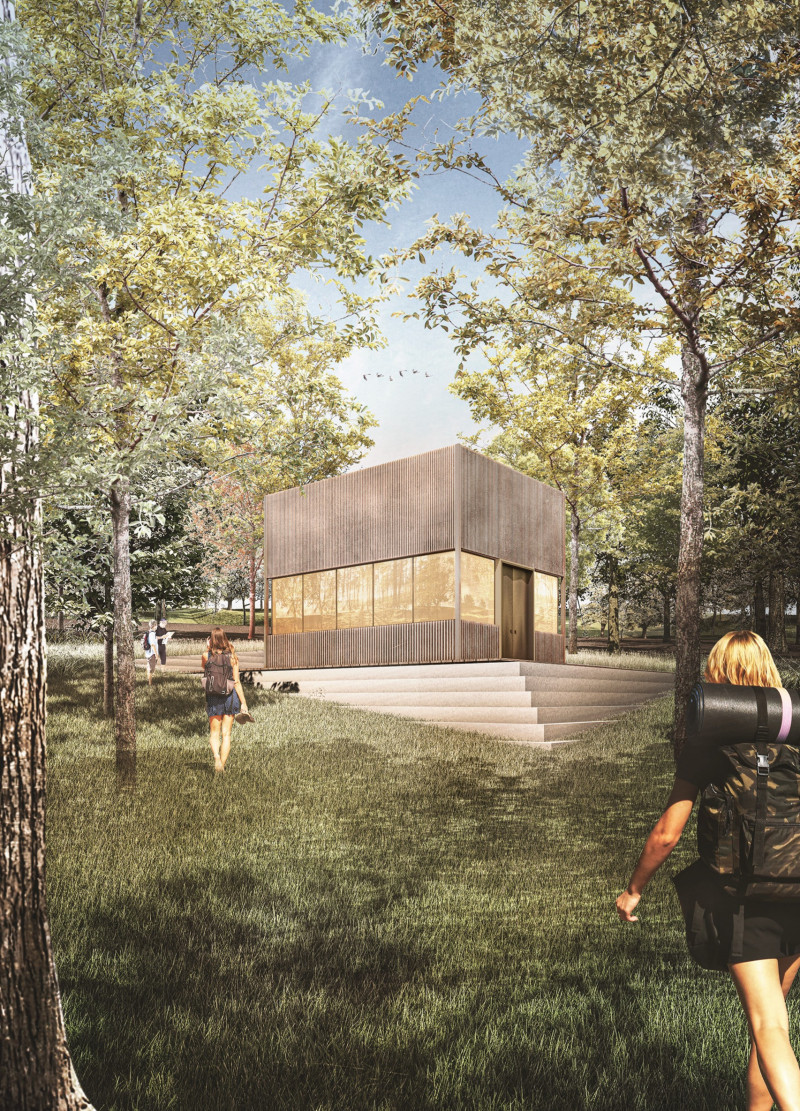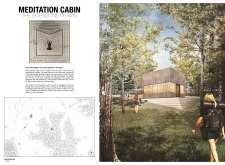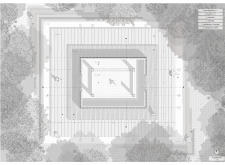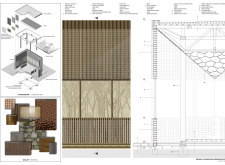5 key facts about this project
The cabin serves as a sanctuary, offering an escape from the fast-paced world. Its primary function is to facilitate mindfulness practices, whether through meditation, yoga, or quiet reflection. The design emphasizes a minimalist approach, recognizing that simplicity can enhance the meditative experience. Key aspects of the architecture include a thoughtful selection of materials and a layout that promotes tranquility.
The architectural skin of the cabin features vertical wooden slats, which not only align with the natural aesthetic but also create privacy while allowing filtered light to enter. The choice of materials such as wood, glass, and copper contributes to the cabin's overall sensory experience. For instance, the wooden façade and flooring provide warmth, while the antique yellow glass enhances the connection to the surrounding forest. The use of copper in the ceiling introduces texture and visual depth, drawing the eye upward and fostering a feeling of spaciousness.
One unique feature of this project is the integration of large, floor-to-ceiling windows that frame views of the surrounding landscape, ensuring an unobstructed relationship between the interior and exterior. This design choice blurs the lines between inside and outside, encouraging users to engage with their environment more fully. The pitched roof design and strategic use of overhangs provide shelter while ensuring proper water drainage, demonstrating practical consideration alongside aesthetic intent.
The spatial configuration of the interior is designed to maximize comfort and calm. An open layout facilitates movement, while designated areas allow for individual meditation practices. This careful arrangement fosters a sense of safety and ease, essential for deep reflection. The copper-clad ceiling enhances acoustics and contributes to a serene indoor atmosphere.
The Meditation Cabin represents a thoughtful approach to architecture that values the connection to nature while prioritizing human experience. The project highlights the importance of materiality, spatial awareness, and environmental integration. For those interested in exploring the architectural concepts further, examining the architectural plans, architectural sections, and architectural designs will provide deeper insights into the project's execution and intention.


























